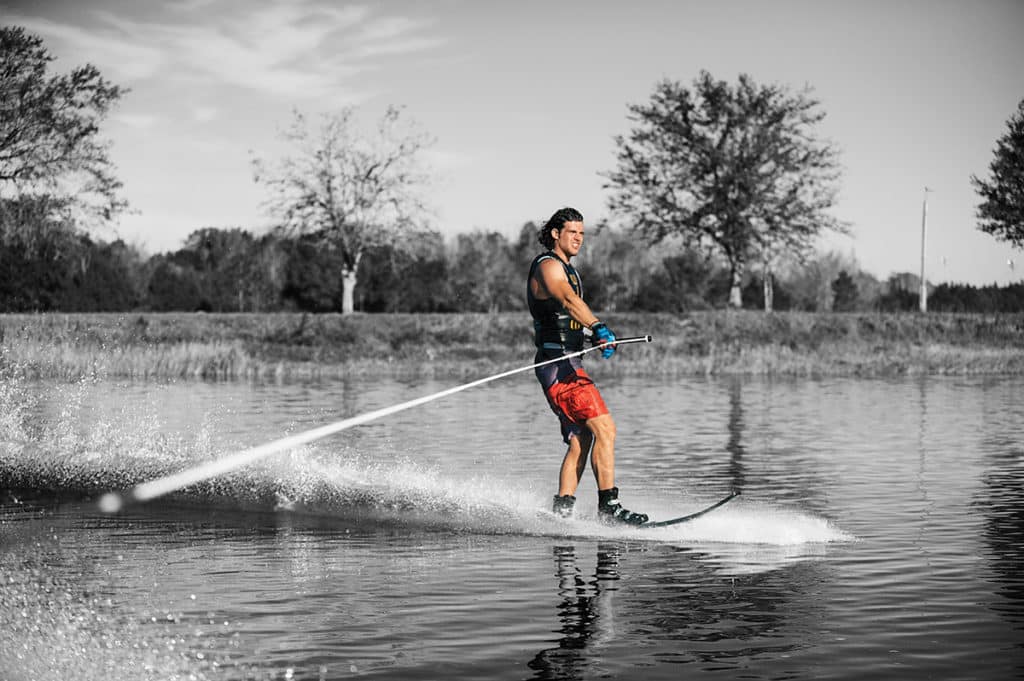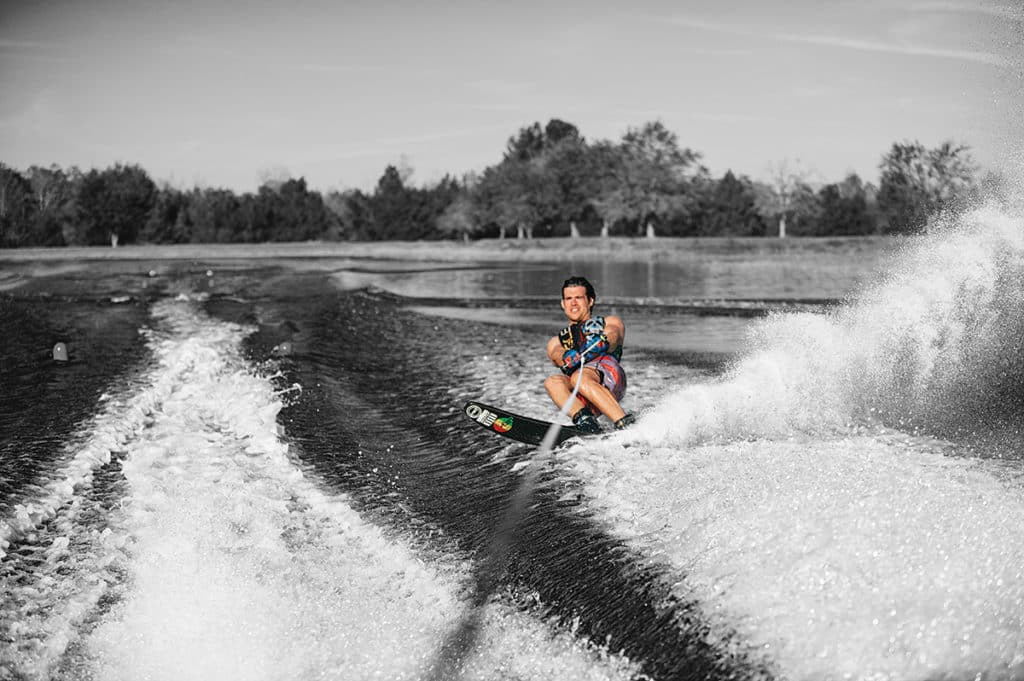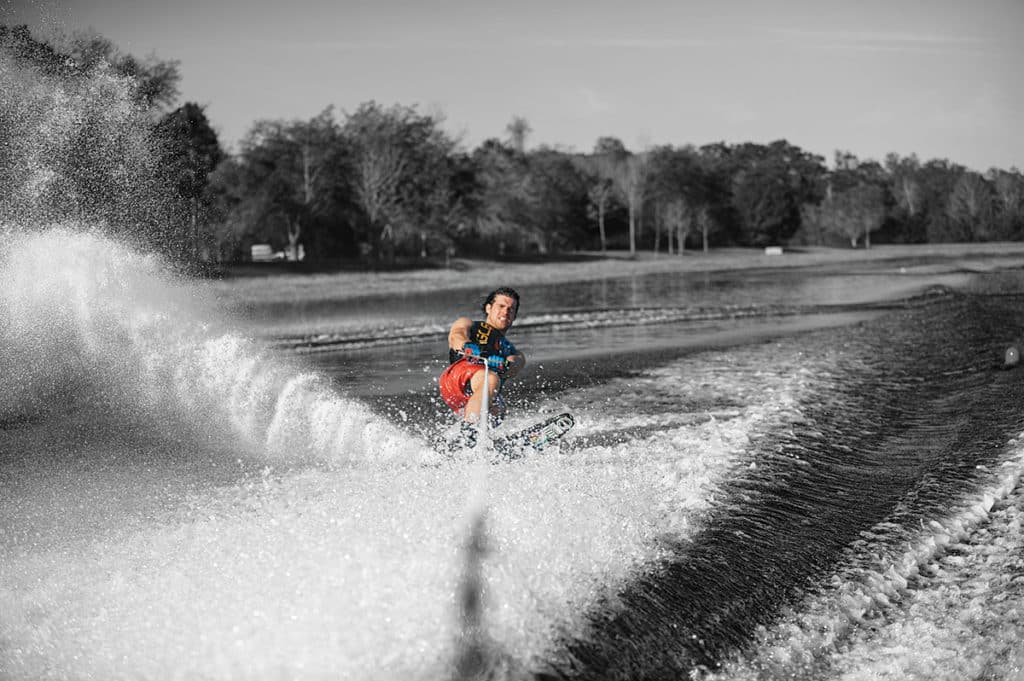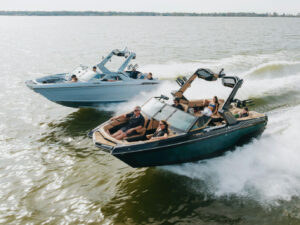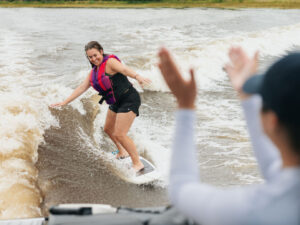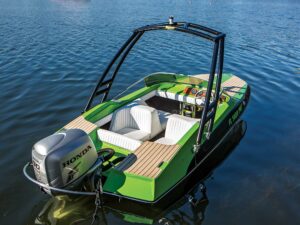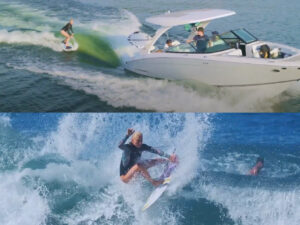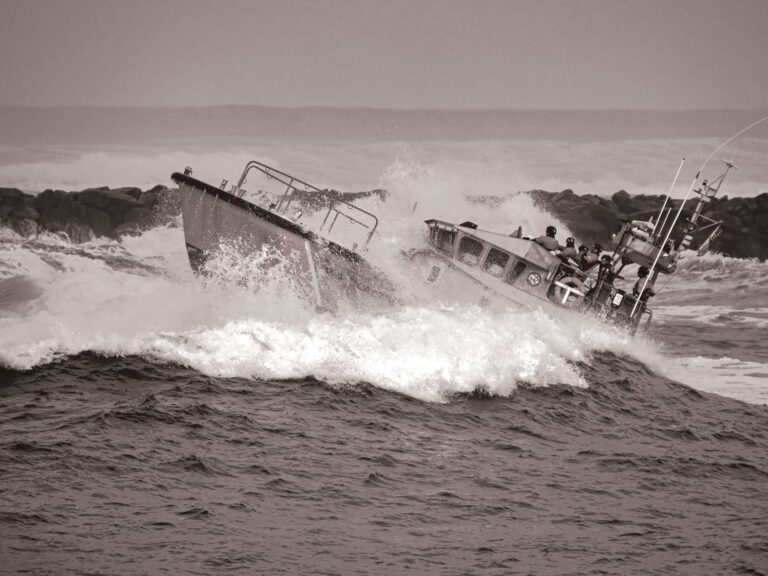We’ll start with the age-old question: Do you want the good news or the bad news first? Well, as it turns out, they are both the same thing — you are going to be working on the same body position the rest of your life. One thing we continually see here at The Boarding School is that skiers of all levels constantly need the same reminders. On the upside, if you get it sorted out early on in your skiing, things are going to be much easier for you down the road, and you are going to be able to diagnose a lot of your own problems. If you’re looking for tech talk, you’re going to need to hop on the Internet and find a forum you can geek out on, but if you want the nuts and bolts that will help you ski better the rest of your life, read on.
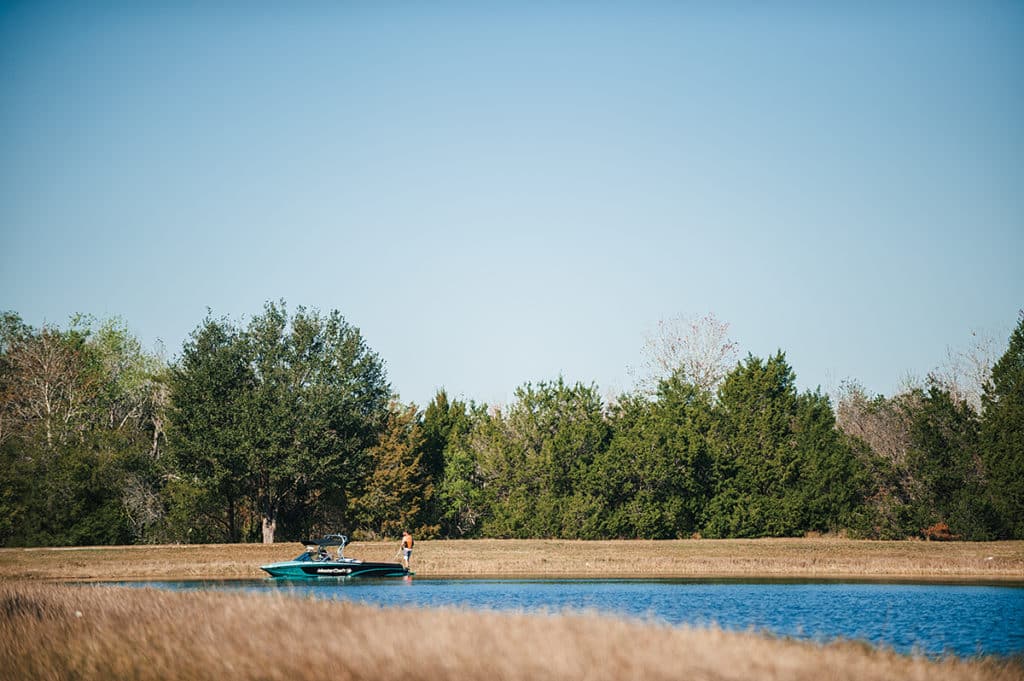
As in most sports, true power and efficiency in skiing come from balance.You don’t have to be the biggest or the strongest skier on the water, but you do have to be balanced. That’s why you see little kids, women and smaller guys that absolutely kill it. It’s not because they are stronger than you, it’s because they are in a better position than you. A major key to success is putting your body in a position to accept the pull of the boat and the push of the water against you.
In the next few pages, we are going to show you the parallels of three different skiers of varying skill levels. As I said, true power comes from balance. So, a major focus should be on how and where you are standing on your ski. You should have fairly equal pressure in both feet while standing over your ski. This applies everywhere (pulling out for the gates, your turn in, behind the boat, and around the buoys). If you are on your back foot, you will be riding the tail of the ski, and you will be fast and unbalanced behind the boat. If you are on your front foot, you are going to create drag and lose your body and course position to the boat. With equal pressure, you are the most balanced and the most powerful. The majority of power in your skiing will come from your lower body (the waist and down), and your upper body will remain pretty static and help to lock in that power.
That brings us to the next major focus of maintaining balance: what you are doing from the waist up. I have been skiing for over 35 years, and I still fight the urge to pull with my arms. You want your shoulders relatively rounded, your arms straight, and even your grip relaxed. I ask people all the time, if you were going to hang from a pull-up bar for 20 minutes, would you tense up your shoulders, arms and grip, or would you just keep them all in a relaxed, straight line and hang? The only difference between behind the boat and the pull-up bar is that your hands are by your waist instead of above your head. This is one of those cases where the whole “less is more” thing really holds true.
Not only does your upper body need to be relaxed, but it also needs to be level at all times. Another huge mistake people make is to lean with their head and shoulders. As I mentioned earlier, your power is coming from your lower body, so you want to do what you can to help maintain that power and efficiency. The best way of doing this is to keep your handle, shoulders and eyes level at all points in the course. So, in your deepest lean, your knees and hips will be leaning away from the boat, but your upper body will remain level. Think of playing tug of war — you are digging away in the sand with your knees and hips, but your upper body is level, keeping your eyes on the prize. When you let your shoulders and eyes dip, you are going to become unbalanced, and when you are unbalanced, things come up fast.
Now that we have these basic fundamentals of balance established, we are going to show you how three different-level skiers apply them and the small changes they make to stay successful.
Level: Beginner
Jimmy is skiing at 24 mph at 15 off
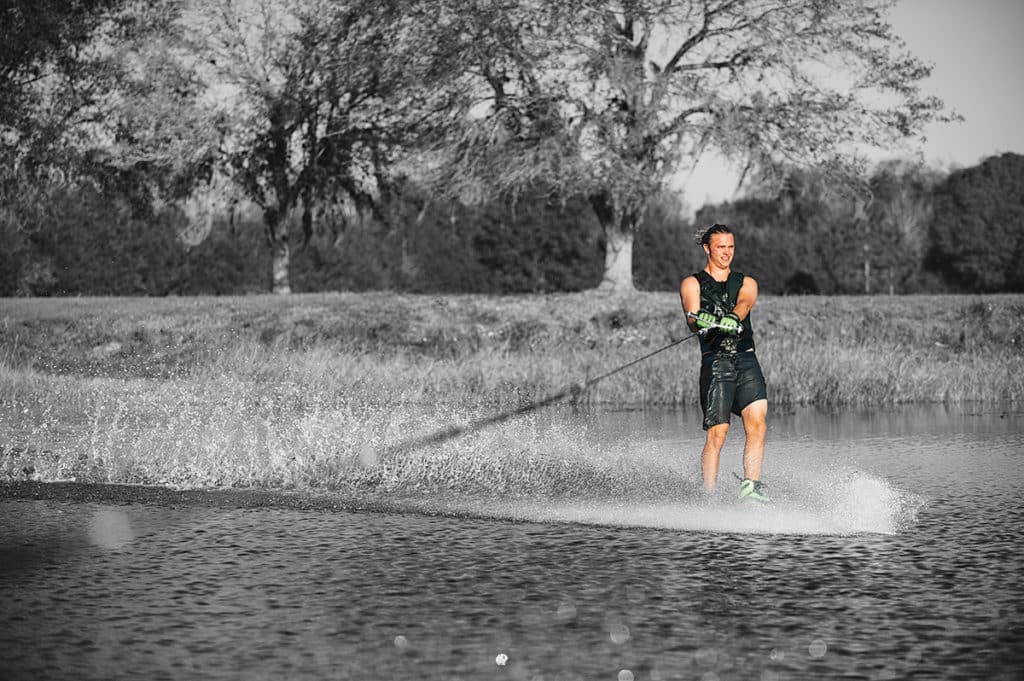
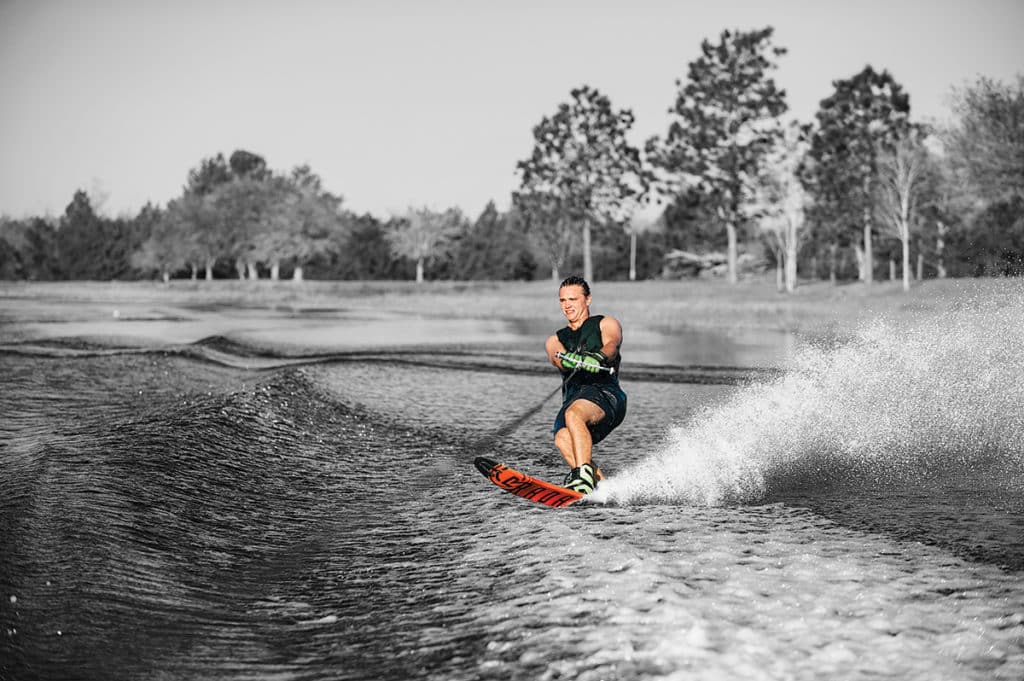

Level: Intermediate
Travis is skiing at 34 mph at 28 off
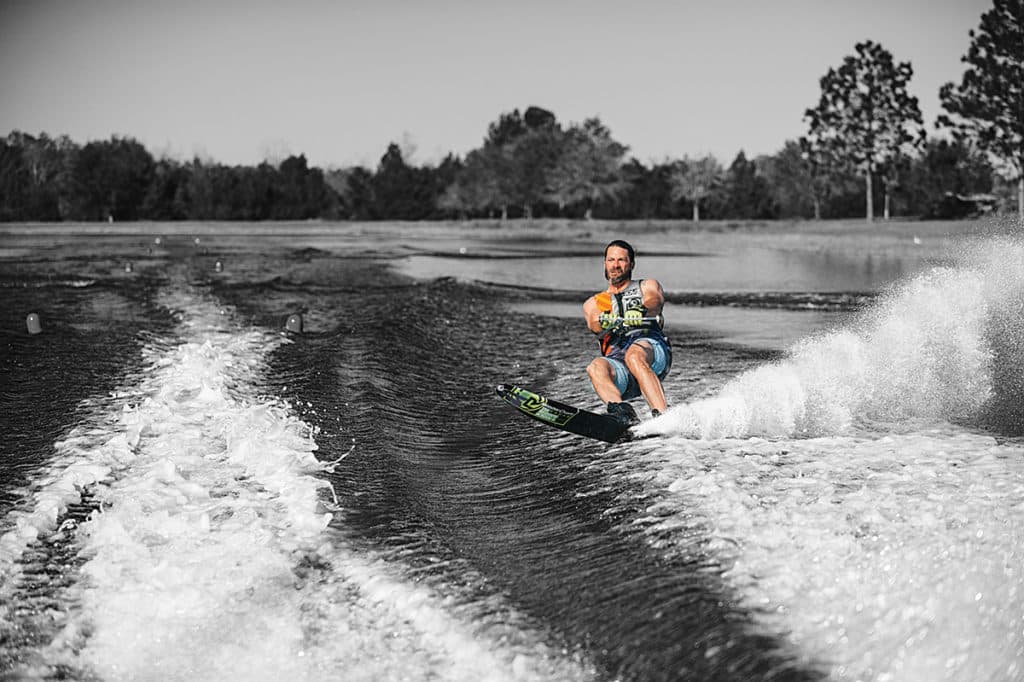
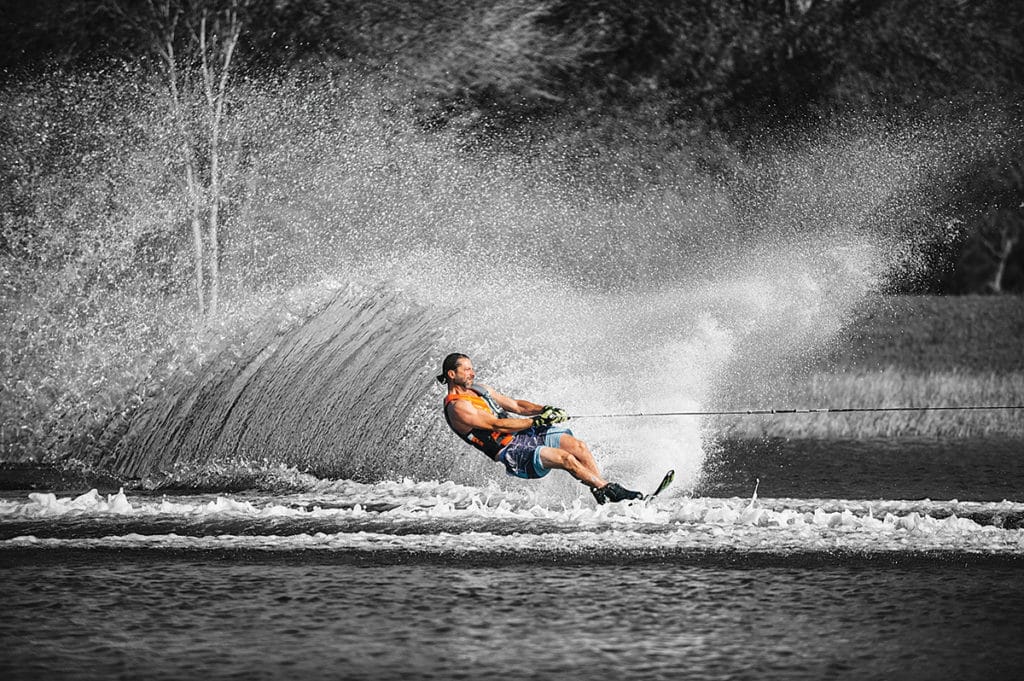
Level: Advanced
Freddie is skiing at 36 mph at 38 off
